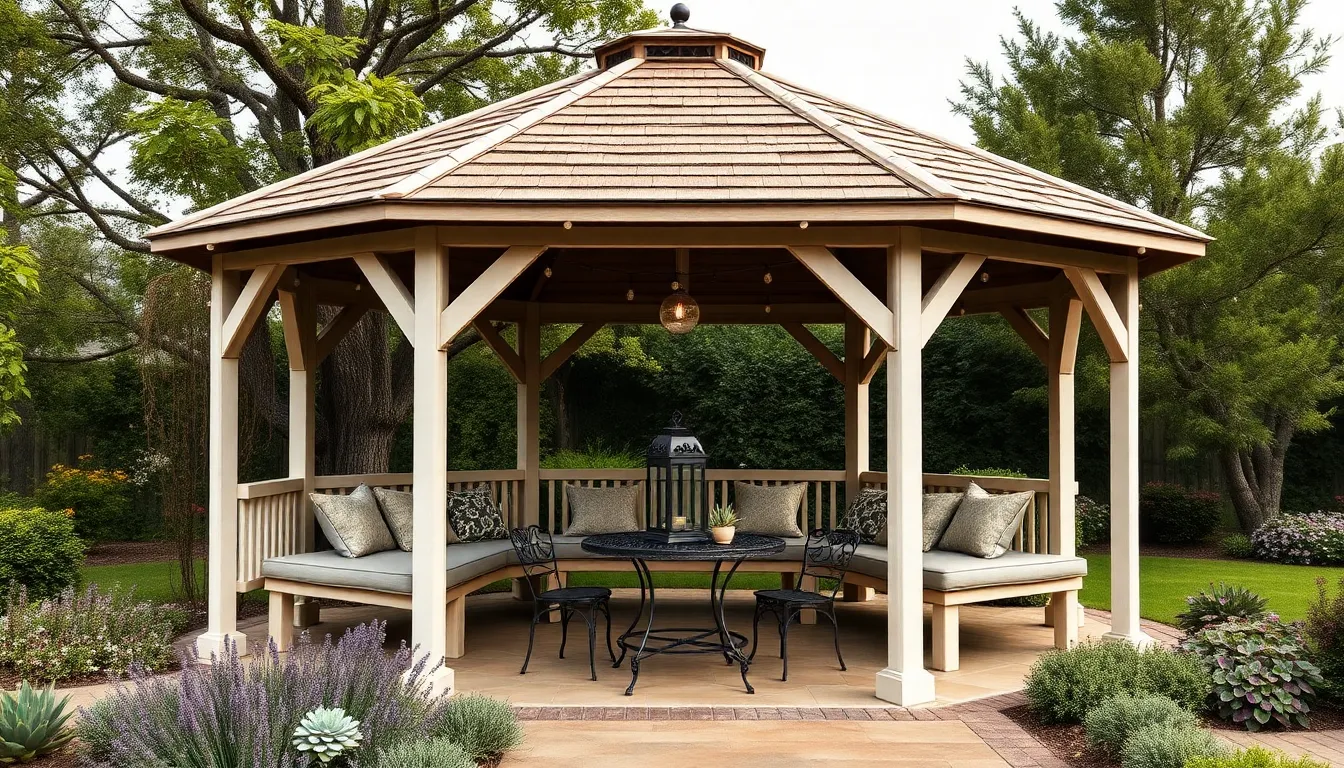Transforming your backyard into a cozy retreat is easier than you think, whether you’re a seasoned DIY pro or just starting out. Our “DIY Gazebo Ideas for Your Backyard” guide is packed with creative, practical projects that will inspire you to build a stunning outdoor space tailored to your style and needs.
Imagine relaxing under a charming gazebo you crafted yourself—offering shade, shelter, and a perfect spot for gatherings or quiet moments. This guide will equip you with clear ideas and tips, helping you feel confident every step of the way as you bring beauty and function to your outdoor living area.
Choose Durable, Weather-Resistant Materials
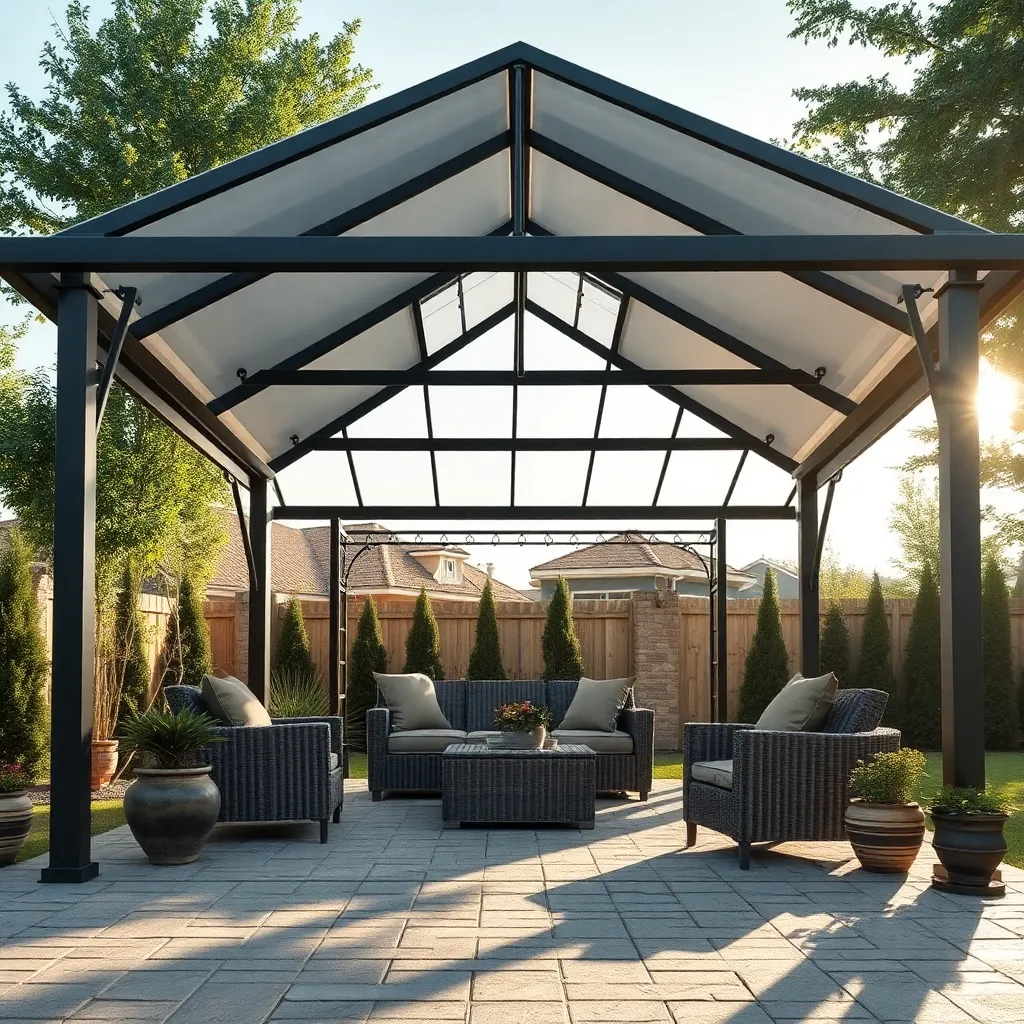
When building a backyard gazebo, opt for materials that withstand various weather conditions without frequent maintenance. Pressure-treated wood is a popular choice for beginners due to its resistance to rot and insects, while cedar and redwood offer natural durability and a beautiful finish. For a modern twist, consider aluminum or vinyl, which are both lightweight and resistant to rust and fading, making them ideal for wet or sunny climates.
To ensure longevity, incorporate design features like sloped roofs for efficient water runoff and raised flooring to prevent moisture damage. Use galvanized or stainless steel fasteners to avoid rust, and seal wooden elements with weatherproof stains or paints annually. Advanced builders might add UV-resistant coatings or install removable panels or curtains to protect against wind and rain, turning your gazebo into a versatile, year-round outdoor retreat.
Incorporate Built-In Seating Options
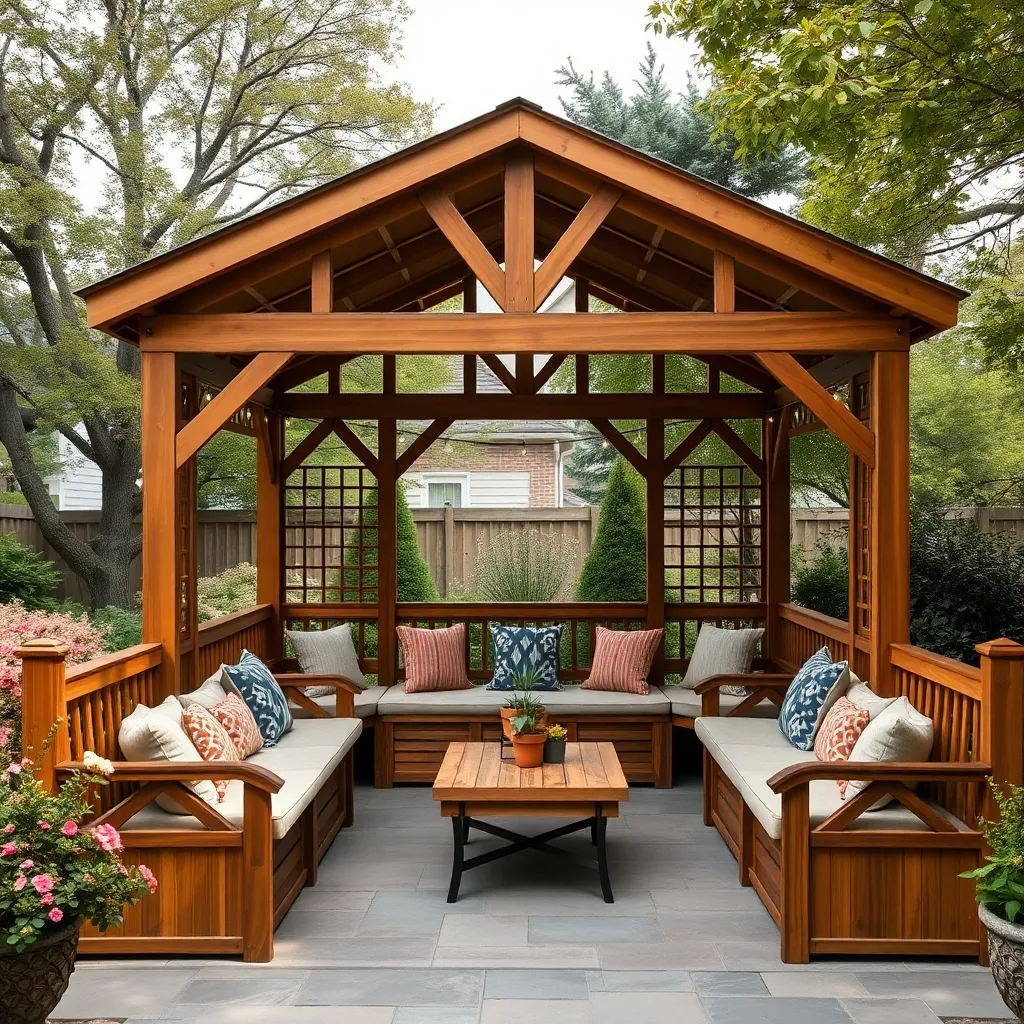
Integrating built-in seating into your gazebo design maximizes space and adds functional comfort without clutter. Opt for durable materials like pressure-treated wood or composite decking that withstand outdoor conditions and require minimal upkeep. Consider standard bench heights of 18 inches with a depth of 16-20 inches for comfortable seating, and build around the gazebo’s perimeter to encourage social interaction and easy traffic flow.
For a polished look, add cushions made from weather-resistant fabrics such as Sunbrella, which resist fading and mildew. Advanced DIYers can enhance seating with hidden storage compartments beneath benches, perfect for stashing garden tools or cushions. Don’t forget to seal all wood surfaces properly to prolong the lifespan of your built-in seating and maintain its aesthetic appeal year-round.
Add Adjustable Shade Features
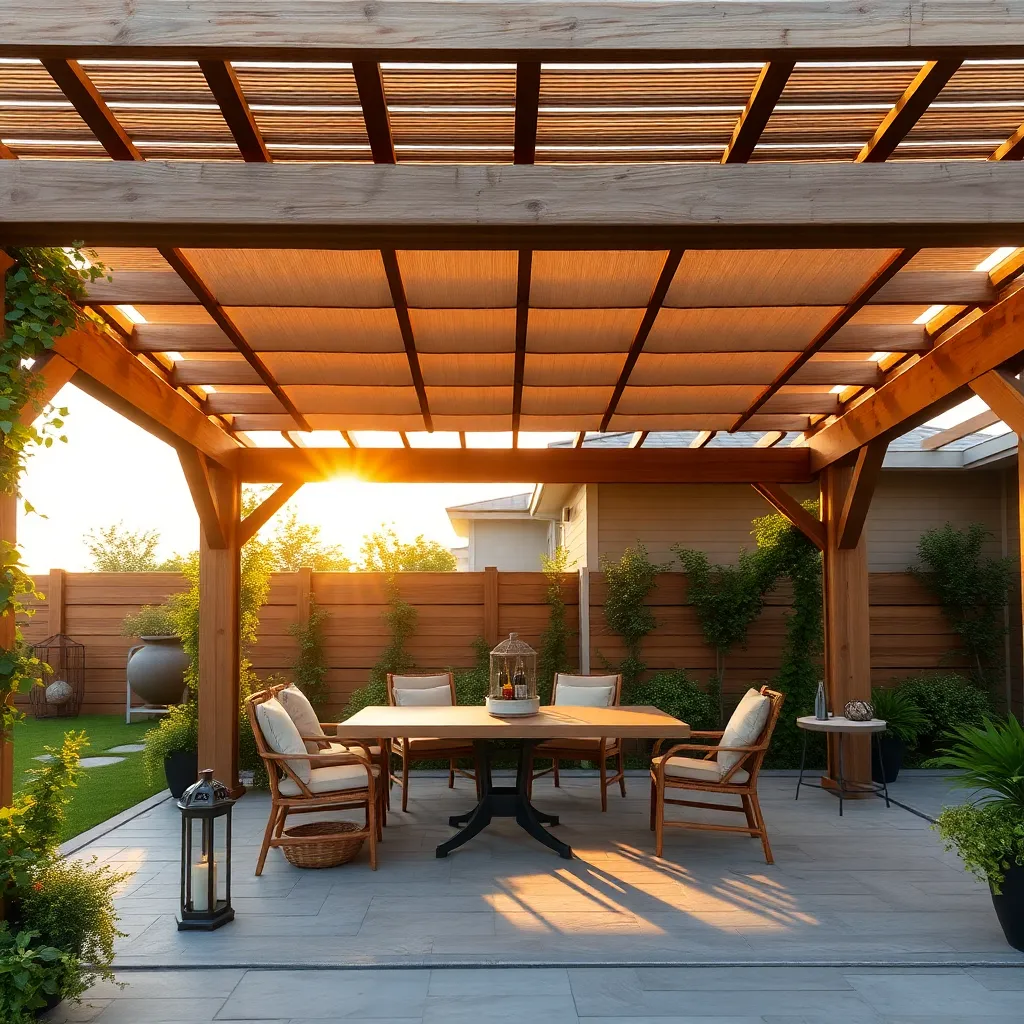
Adding adjustable shade features to your DIY gazebo allows you to control sunlight and create a comfortable outdoor retreat throughout the day. Consider installing retractable awnings or roll-up bamboo blinds that can be easily adjusted based on the sun’s position. Use weather-resistant materials like UV-protected canvas or treated wood slats to ensure durability and longevity in all seasons.
For a more advanced approach, incorporate slatted louvered roofs with manual or motorized controls, enabling you to tilt the slats for optimal shade and ventilation. When planning dimensions, make sure the adjustable components extend beyond the gazebo’s perimeter by at least 12-18 inches to provide ample coverage and protect furniture from direct sunlight. This flexibility enhances usability and keeps your outdoor space inviting year-round.
Use Modular, Easy-Assemble Components
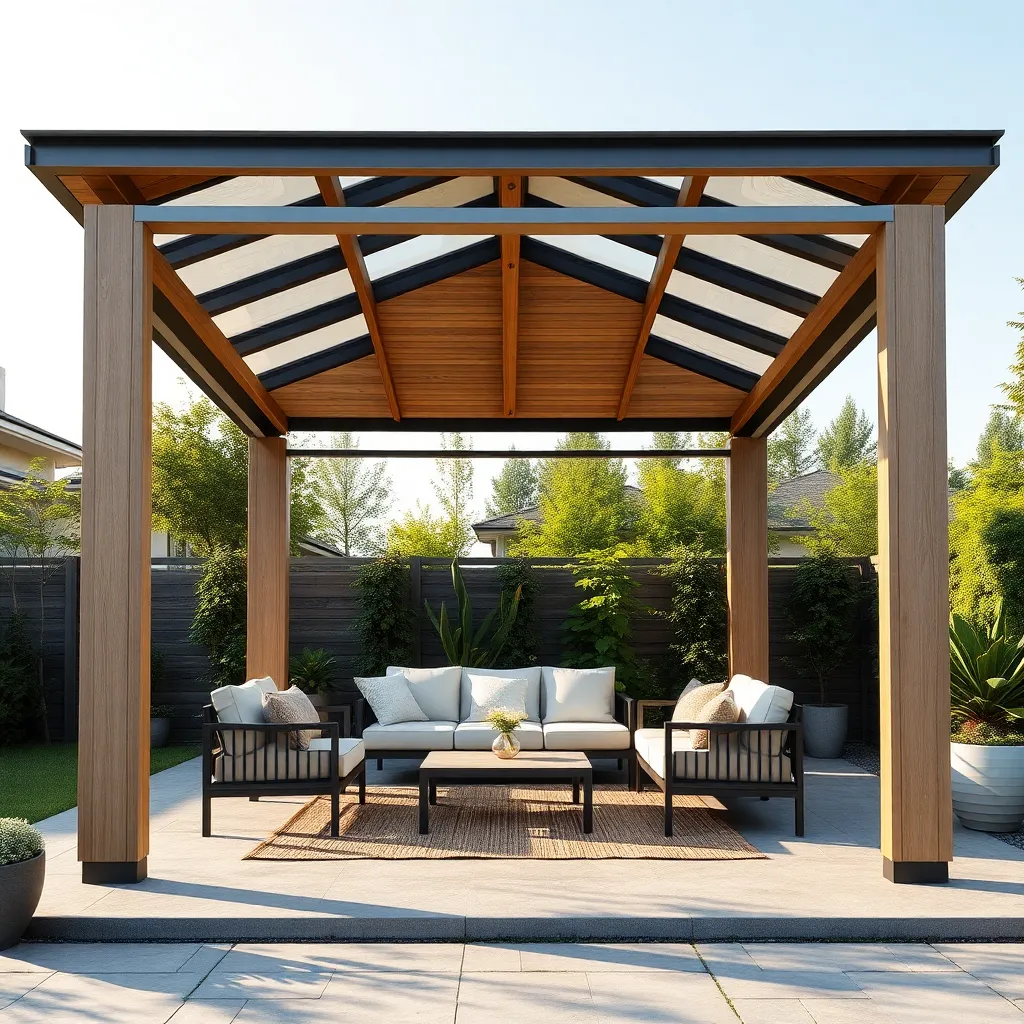
Choosing modular, easy-assemble components simplifies the gazebo building process and allows for customization to fit your backyard space perfectly. Look for kits with pre-cut, weather-resistant materials such as cedar or aluminum that include clear instructions and labeled parts, so you can quickly piece together the frame without specialized tools or expertise.
For advanced DIYers, consider integrating interlocking panels or snap-fit connectors that enhance stability and make future modifications easier. To ensure durability, use galvanized screws and corrosion-resistant brackets, and plan your design with standard dimensions like 8×8 or 10×10 feet modules to maintain versatility and expandability.
Select Strategic Location for Ventilation
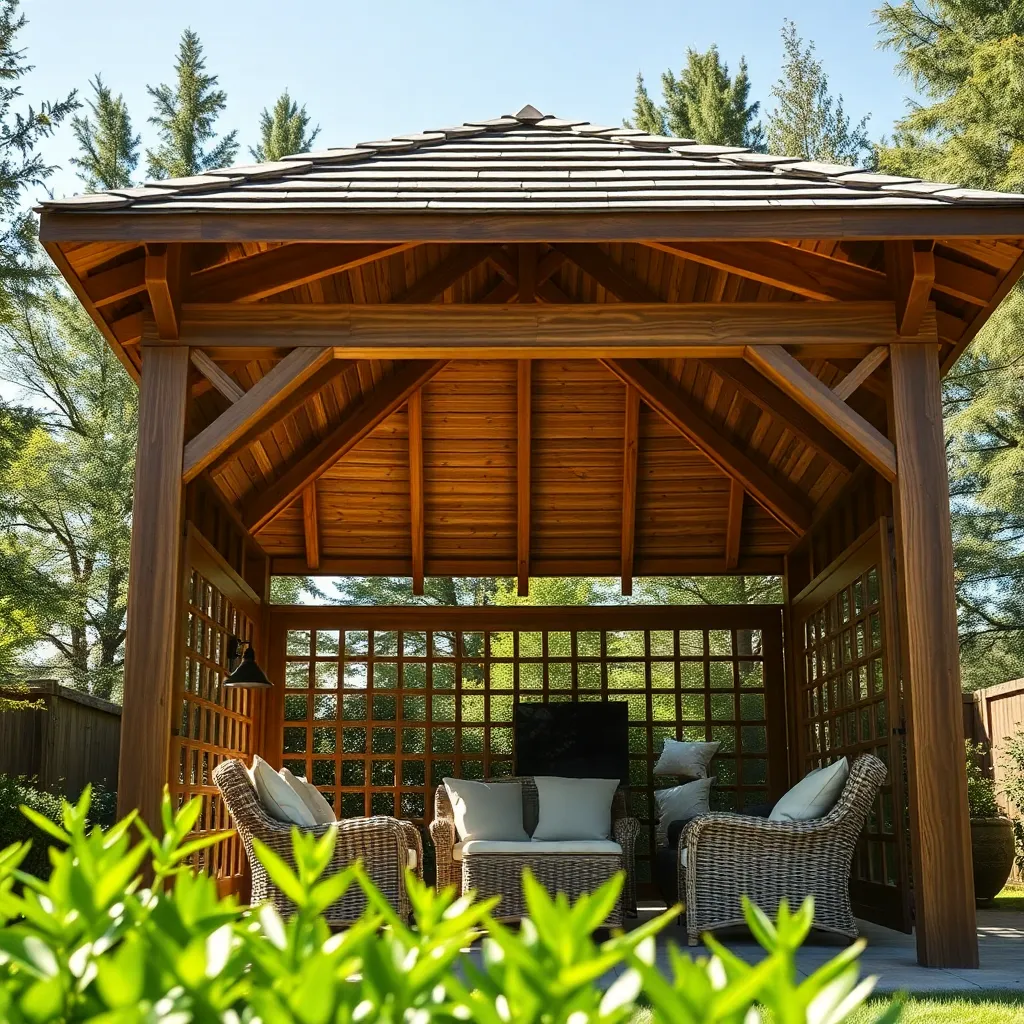
Choosing the right spot for your gazebo is essential to ensure optimal airflow and comfort. Aim to place your shelter in an area that naturally catches prevailing breezes but is shielded from harsh winds by trees or fences. Incorporate design elements like wide eaves and open lattice sides made from weather-resistant wood or metal to enhance ventilation without sacrificing shade or privacy.
For advanced planning, consider installing adjustable vents or skylights that can be opened to increase airflow during hot days. Position your gazebo at least 10-15 feet away from walls or dense shrubs to prevent stagnant air pockets, and use breathable roofing materials like polycarbonate panels or breathable fabric canopies to reduce heat buildup inside the shelter.
Conclusion: Creating Beautiful Outdoor Spaces
Creating a backyard gazebo together is more than just a fun DIY project—it’s an opportunity to strengthen your relationship through shared goals, communication, creativity, compromise, and teamwork. By embracing these five key concepts, you can build not only a beautiful outdoor space but also a deeper connection with your partner. To get started today, choose one simple gazebo idea from this article and discuss how you’d like to personalize it together. Remember, every small step you take in collaboration plants the seeds for lasting harmony and joy. Be sure to save or bookmark this article as your go-to guide whenever you’re ready to refresh your backyard or nurture your relationship with meaningful projects. With each DIY effort, you’re creating more than a structure—you’re building a foundation for relationship success that grows stronger with time. Embrace the journey, and watch both your gazebo and your bond flourish beautifully.

